A 3'6" gauge electric tramway operated between these two North Wales
seaside resorts from 1907 until 1956.
Extensions were proposed at both ends of the line but only that to the Queen's Hotel at Old
Colwyn was constructed throughout.
A short section along the West Shore road at Llandudno of the proposed Deganwy extension was
built but it closed soon afterwards.
The lines, which were mainly double track from 1929, ran through the streets in both
Llandudno/Craig-y-Don and Rhos-on-Sea/Colwyn Bay, but in between in the
Penrhynside and Penrhyn Bay section it was mostly on a private right of way.
An unusual feature was a private toll road on the sea front by the golf course at Penrhyn
Bay.
The tramway was in view of the sea at various points and ran alongside it at
both Penrhyn Bay and Rhos-on-Sea.
The only depot was an eight
road shed, located in Tramway (now Penrhyn) Avenue, Rhos-on-Sea.
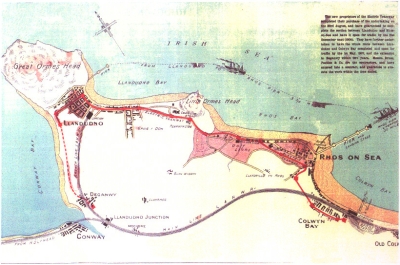
Click on map to enlarge
New trams
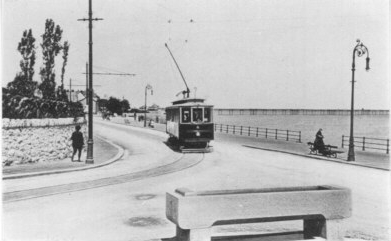

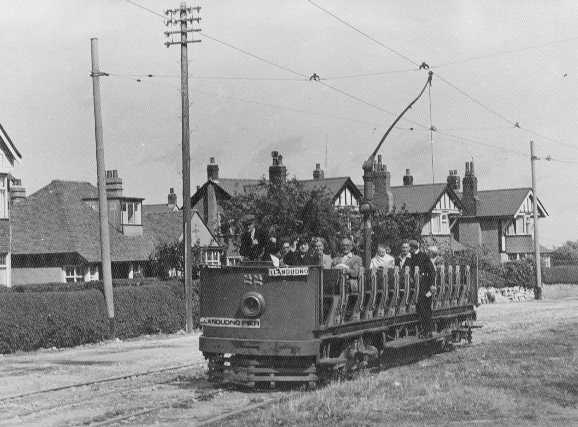 |
The tramcars were originally 4-axle, clerestory-roofed,
long single deck cars with two saloons
(Nos 1-14).
These were joined in 1909 by four 2-axle convertible cars
(Nos 15-18).
The fleet was increased in 1920 when the Company took delivery of four open toast-rack bogie
tramcars - initially numbered
19-22 - capable of carrying 60 pasengers each.
1933 saw the delivery of five replacement single deck second-hand tramcars from Accrington
Corporation
(Nos 1-5),
followed late in 1936 by ten 4-axle open top double-deck trams
(Nos 6-15) purchased
from Bournemouth Corporation. These proved to be very popular with holidaymakers riding on the
upper deck.
The majority of the original cars from the 1907 and 1909 batches were then withdrawn from
service.
Finally, two totally enclosed streamlined bogie double-deck trams were obtained from Darwen
Corporation in 1946 ((Nos 23 and
24), but their 4'0" bogies needed to be adjusted to the narrower gauge of the
Welsh tramway. |
Second hand trams
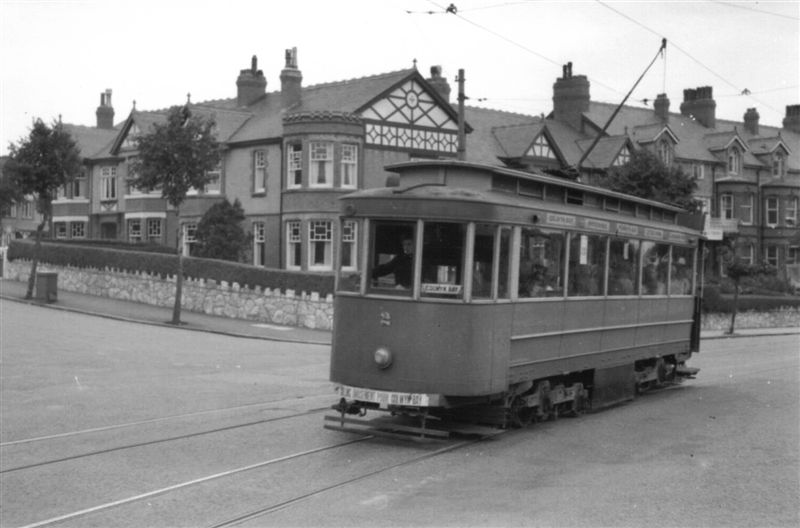
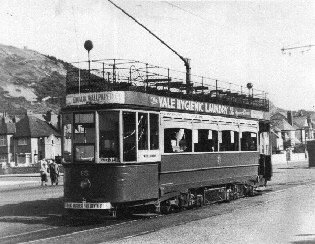

|
The line between the two resorts was extremely popular despite intense competition from
Crosville buses, who provided open-top buses in the latter years.
More than 2.5 million passengers were carried annually, with the section
between Llandudno town centre and Craig-y-Don being the busiest. This section was often
augmented by the "Llandudno local" trams at busy times - normally Nos 1-5 or No 23, turning
back at the crossover at the entrance to Bodafon fields.
Late in 1955 strenuous efforts were made by enthusiasts to preserve the line and its
famous tramcars, but as agreement could not be reached on the price, the Company steadfastly
believed that their secure future lay in the operation of buses.
The last tram (No 8) left Llandudno on Saturday 24th March 1956 and the Company
'red' buses took over
the following day, operating a slightly different route due to the state of the roads.
The Company's hopes were never realised. After five years of intense competition against
Crosville the Directors accepted an offer of £40,000 for the goodwill and 'The Llandudno
and Colwyn Bay Electric Railway Ltd' ceased its operations on 27th May 1961.
One tramcar did survive however -
No.6 - built in 1914 for Bournemouth Corporation. It was purchased for
preservation and was displayed by the British Transport Commission in their museum at
Clapham, London until 1974. Subsequently it returned to Bournemouth and has been restored
back to No.85, the fleet number it carried during its operational life on the South
coast.
The former tram depot on Penrhyn Avenue survived for a further 50 years as an Express
Parcels delivery/collection depot, although its frontage was extended towards the road.
In the spring of 2006 (after survivung 99 years) it was finally demolished to make way
for yet another residential development. |

